The Scabiosa flower holds deep spiritual meaning that has fascinated people across cultures for centuries. Known for its unique pincushion shape and delicate petals, this flower symbolizes several powerful themes related to the soul and personal growth. Its spiritual meanings include love, transformation, healing, and purity, making it a flower rich in symbolism and significance.
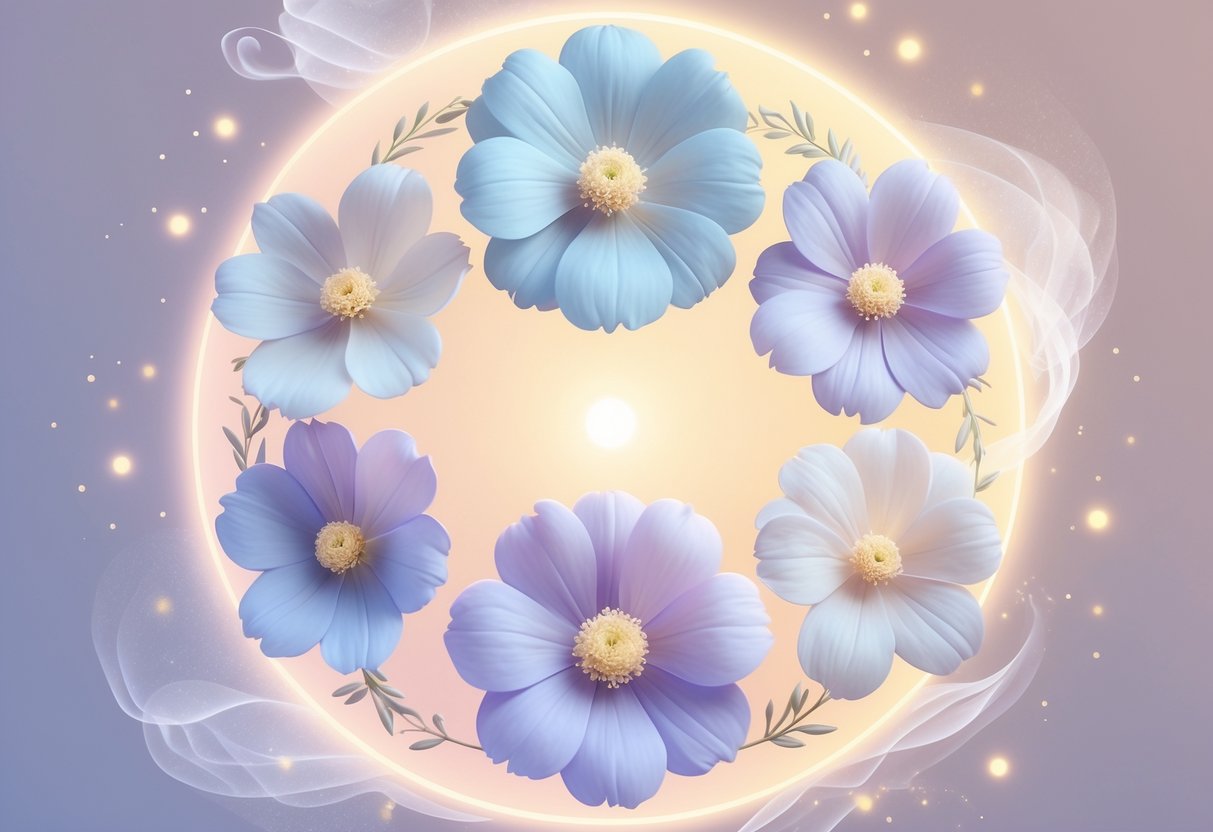
Beyond just beauty, the Scabiosa carries messages about resilience and the cycles of life, often linked with the ideas of death and rebirth. It is also associated with mystical qualities like attracting positive energy and enhancing intuition. These qualities have made it a favorite in spiritual practices, art, and literature alike.
Exploring these meanings gives insight into why the Scabiosa flower is more than a decoration. It serves as a symbol for strength through change, emotional healing, and the delicate balance of life’s mysteries.
Key Takeways
- The Scabiosa flower represents deep themes like love, healing, and transformation.
- It is connected to spiritual growth and emotional resilience.
- The flower has cultural significance that enhances its symbolic value.
Overview of Scabiosa Flower and Its Significance
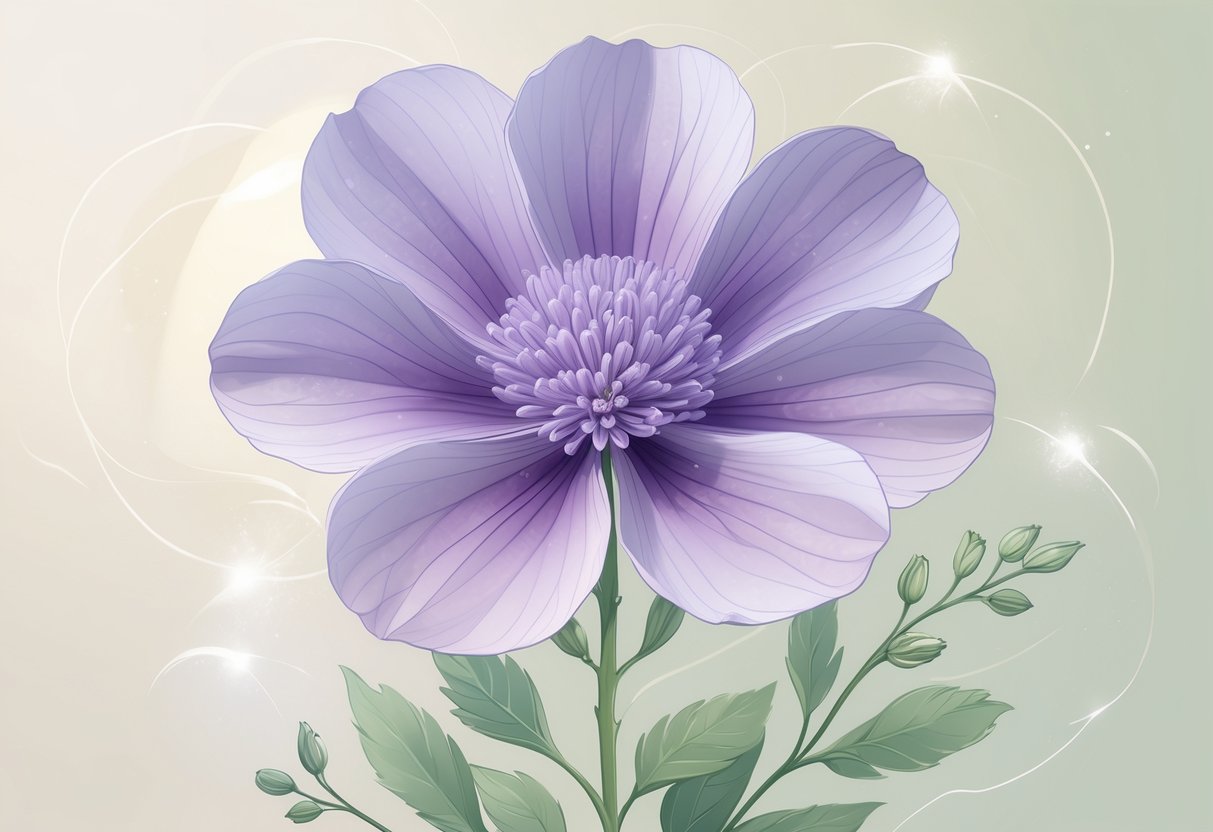
The Scabiosa flower is known for its unique shape and rich cultural background. It has distinct physical traits, a range of varieties, and several uses in gardens and symbolism. Understanding these details helps clarify why this flower holds special meaning in different traditions.
Origins and Historical Background
Scabiosa belongs to the honeysuckle family, Caprifoliaceae, and is native to Europe and parts of Asia. Historically, it has been appreciated not only for its beauty but also for medicinal qualities. Its Latin name is related to “scabies,” referring to its use in treating skin conditions in ancient times.
The flower has a strong presence in art and literature dating back to the Victorian era. During that time, Scabiosa symbolized femininity and was often linked to emotions like nostalgia and farewell. In some cultures, it also represented unfortunate or unrequited love.
Physical Characteristics and Varieties
The Scabiosa flower is often known as the pincushion flower because of its round, button-like bloom that resembles a pincushion. It typically grows on slender stems with petals arranged in a symmetrical, balanced pattern. This design is tied to its symbolism of harmony.
Scabiosa flowers come in several colors, including blue, purple, pink, and white. Each color adds extra meaning—blue often stands for peace, purple for creativity, pink for affection, and white for purity. Some species flower throughout much of the year, which is uncommon among many plants.
Common Names and Uses
Besides its scientific name, Scabiosa is widely called the pincushion flower due to its distinctive bloom shape. It is a popular choice for gardens because it attracts butterflies and adds delicate beauty to floral arrangements.
The flower is used in traditional medicine and is important in symbolism. It frequently appears in tattoos and memorial settings, showing meanings like endurance, healing, and remembrance. Its elegant appearance also makes it a favored flower in romantic and artistic expressions.
Spiritual Meaning 1: Love and Devotion
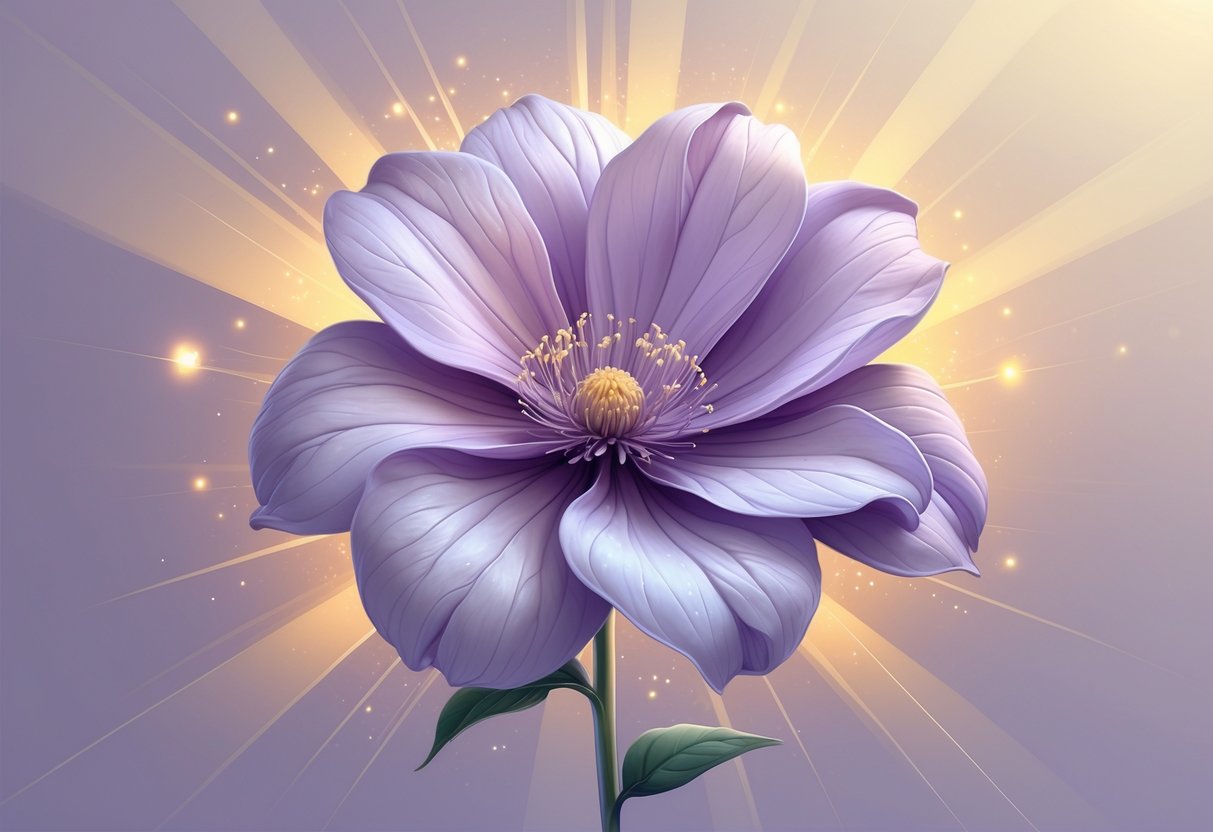
The Scabiosa flower, also known as the Pincushion flower, carries strong spiritual meanings tied to love and devotion. It reflects both the pain of unreturned feelings and the deep care partners show each other in lasting relationships. This duality makes the flower a symbol of complex emotions in love.
Unrequited Love Symbolism
The Scabiosa flower was historically linked to unfortunate or unrequited love. Its shape, with many small stamens resembling pins in a pincushion, symbolizes the sharp pain and emotional wounds felt when love is not returned.
Dark-colored Scabiosa flowers especially conveyed sorrow and sadness connected to love lost or ignored. In Victorian flower language, these blooms expressed feelings that were difficult to voice directly.
Despite this, the flower’s delicate beauty still suggests care and fondness. It represents the bittersweet nature of love where affection exists without mutual fulfillment.
Eternal Commitment in Relationships
Beyond its connection to unrequited love, the Scabiosa flower also symbolizes devotion and commitment between partners. It appears in bridal bouquets, marking its role as a symbol of enduring love.
The flower’s long-lasting blooms mirror the loyalty and patience needed to maintain strong relationships over time. Its calm and peaceful colors evoke the kindness and dedication partners offer each other.
Scabiosa represents how love involves dedication through challenges, making it a fitting gift for those who want to show deep emotional support and ongoing care.
Spiritual Meaning 2: Purity and Innocence
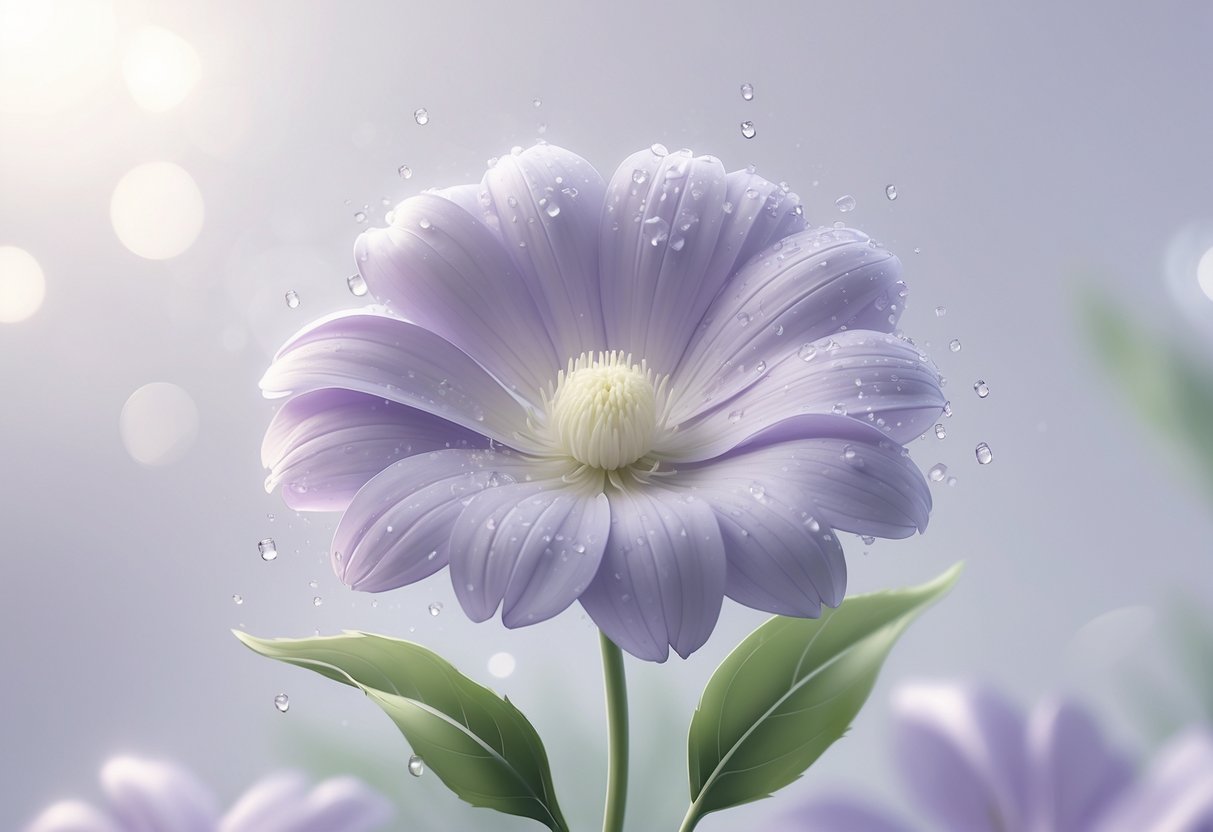
The Scabiosa flower is closely linked to ideas of purity and innocence through its delicate appearance and soft colors. It often represents fresh starts and a calm, peaceful presence that encourages renewal and healing. These qualities make it a meaningful choice in spiritual contexts and personal ceremonies.
Symbol of New Beginnings
Scabiosa flowers symbolize new beginnings because of their association with purity. Their gentle petals, often in light shades like white and pale blue, suggest a clean slate and the chance to start over. This symbolism is important in weddings and rites of passage where the idea of fresh starts is central.
People see Scabiosa as a flower that encourages hope and growth. It reminds individuals to embrace change with a clear heart and an open mind. Its role in gardens and bouquets often highlights the transition from old to new phases in life.
Association with Peace and Renewal
The Scabiosa flower also carries a strong link to peace and renewal. Its association with calmness and serenity comes from both its appearance and the cultural meanings attached to it. It is used to create a peaceful atmosphere and promote a sense of balance.
In spiritual traditions, Scabiosa flowers are sometimes chosen for their calming effects, helping reduce stress and foster emotional healing. Their presence in ceremonies or personal spaces reflects the desire to renew one’s spirit and find inner peace, emphasizing the flower’s role beyond mere decoration.
Spiritual Meaning 3: Healing and Restoration

The Scabiosa flower has long been connected to healing, both through its physical uses and its spiritual symbolism. It represents more than just recovery from illness; it stands for emotional and spiritual renewal. This layered meaning makes it important in many traditions and practices.
Historical Medicinal Properties
Scabiosa, also known as the pincushion flower, has a history rooted in folk medicine. Its name comes from the Latin word scabere, meaning “to scratch,” hinting at its use to treat skin conditions like scabies.
Traditionally, people used Scabiosa to heal wounds and soothe skin irritations. The dried petals were sometimes included in teas or poultices for their calming effects on the body.
Though modern medicine does not commonly use Scabiosa, its past role as a healing herb has shaped its spiritual meaning. It symbolizes physical restoration and the body’s ability to recover from harm.
Spiritual Cleansing and Growth
Beyond physical healing, the Scabiosa flower symbolizes spiritual cleansing. It is believed to help clear negative energy and encourage emotional recovery.
The flower’s delicate petals inspire gentleness and patience during difficult times. This can aid personal growth by reminding individuals to embrace change and healing as parts of life.
In spiritual practices, Scabiosa represents the restoration of balance, helping people move past pain toward inner peace. It encourages trust in the process of growth and renewal after hardship.
Spiritual Meaning 4: Mystery and Enigma
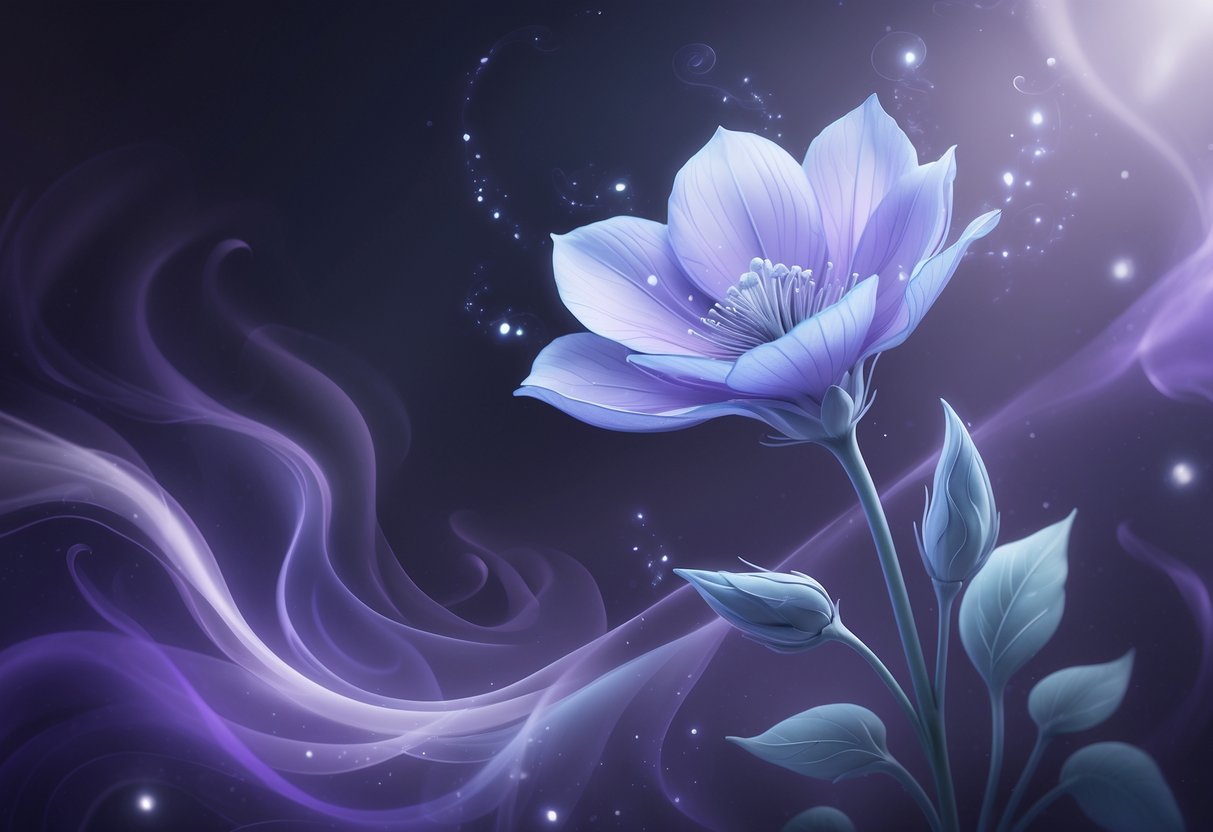
The Scabiosa flower carries a deep sense of mystery and intrigue. Its unique shape and history link it to ideas about the unknown and the hidden parts of life. This flower invites reflection and exploration into what lies beneath the surface.
Symbol of the Unknown
The Scabiosa flower often symbolizes the unknown because of its distinct, button-like bloom that looks like a hidden core waiting to be revealed. This shape suggests secrets and things not immediately obvious. In many cultures, the flower is seen as a reminder that life has mysteries beyond human understanding.
It encourages people to accept uncertainty and embrace curiosity. The flower’s connection to spiritual transformation also ties it to what is unseen, such as the soul’s journey after death or the hidden forces in the universe. The Scabiosa thus acts as a symbol that acknowledges life’s deeper layers.
Role in Introspection and Contemplation
Scabiosa is linked to introspection because its mysterious form inspires quiet thought and deeper self-awareness. People often use it as a focus during meditation or spiritual practice to help explore their inner world.
By reflecting on the flower, individuals may feel encouraged to question their beliefs and face hidden emotions. The calming effect of the flower supports mental clarity, allowing a person to examine things they may usually avoid. It serves as a guide for those seeking to uncover truths within themselves.
Spiritual Meaning 5: Transformation and Resilience

The Scabiosa flower symbolizes the ability to transform through difficult times and remain strong. Its meaning touches on recovering from hardships and the personal growth that follows those challenges.
Overcoming Adversity
The Scabiosa flower represents the power to endure and overcome adversity. Its connection to the cycle of life and death reflects how individuals can face hardships and emerge renewed. This flower encourages releasing past pain and embracing healing.
People who connect with the Scabiosa flower spiritually may find it a reminder to stay resilient during tough times. It suggests that setbacks are part of a larger process of renewal. The flower’s calming presence supports emotional recovery and mental strength in difficult moments.
Representing Personal Growth
Personal growth is a central theme connected to the Scabiosa flower. It symbolizes change that leads to a stronger, wiser self. The flower’s spiritual energy promotes awareness and encourages transformation beyond hardships.
Individuals may see the Scabiosa flower as a sign of inner progress. It supports letting go of old patterns to embrace new experiences. This growth fosters resilience, helping a person adapt and thrive with confidence after change.
Spiritual Meaning 6: Beauty, Grace, and Joy
The scabiosa flower is prized for its delicate and charming appearance. It brings a refined elegance wherever it is used. Beyond looks, it also carries a message of uplifting emotions and inspiration.
Aesthetic Appeal in Floral Arrangements
Scabiosa flowers feature intricate, button-like blooms that add texture and detail to floral designs. Their slender stems and symmetrical petals create a balanced and elegant look.
They often serve as focal points or accents in bouquets, enhancing both simple and complex arrangements. Their soft colors, such as pale pink, white, and light purple, bring a subtle beauty that complements other flowers.
Floral designers value scabiosa for its ability to combine with a variety of flower types, creating harmony and sophistication. The flower’s graceful form makes it ideal for weddings, celebrations, and decor where beauty and refinement are key.
Connection to Happiness and Inspiration
The joyful presence of scabiosa flowers symbolizes inner happiness and emotional warmth. Its delicate blooms can evoke feelings of contentment and peace.
People often associate scabiosa with gentle joy, making it a suitable symbol for inspiration and calm encouragement. The flower’s appearance encourages a positive outlook, reminding individuals to appreciate life’s small pleasures.
As a source of inspiration, scabiosa supports creativity and emotional expression. Its elegant form encourages calm reflection and beauty in everyday moments. This connection makes the flower a meaningful gift or personal symbol for those seeking joy and grace.
Cultural and Modern Interpretations of Scabiosa

The scabiosa flower carries different meanings in cultures worldwide. It is also popular today in art, literature, and especially in floral arrangements and weddings.
Symbolism Across Different Cultures
In various cultures, the scabiosa flower symbolizes love, purity, and remembrance. It has been used to honor the dead, representing mourning and peaceful rest. Some traditions see it as a sign of healing due to its historical use in folk medicine.
Its shape and colors add to its cultural meanings. Blue scabiosa is linked to calmness and peace, while purple represents creativity and spiritual growth. Pink stands for affection and tenderness, and white symbolizes new beginnings and purity.
This wide range of symbolism shows its importance beyond just being a decorative flower.
Use in Art, Literature, and Weddings
The unique pin-cushion shape makes scabiosa a favorite in artistic expression. Artists and writers often use the flower to symbolize endurance and delicate beauty. It appears in poems and paintings to convey grace and emotional depth.
In weddings, scabiosa is popular in bridal bouquets and floral arrangements. Its balanced, elegant form fits well with themes of harmony and patience. Couples choose it to represent lasting love and devotion. The flower also adds texture and interest to arrangements without overwhelming other blooms.
Growing Conditions and Care for Spiritual Practices
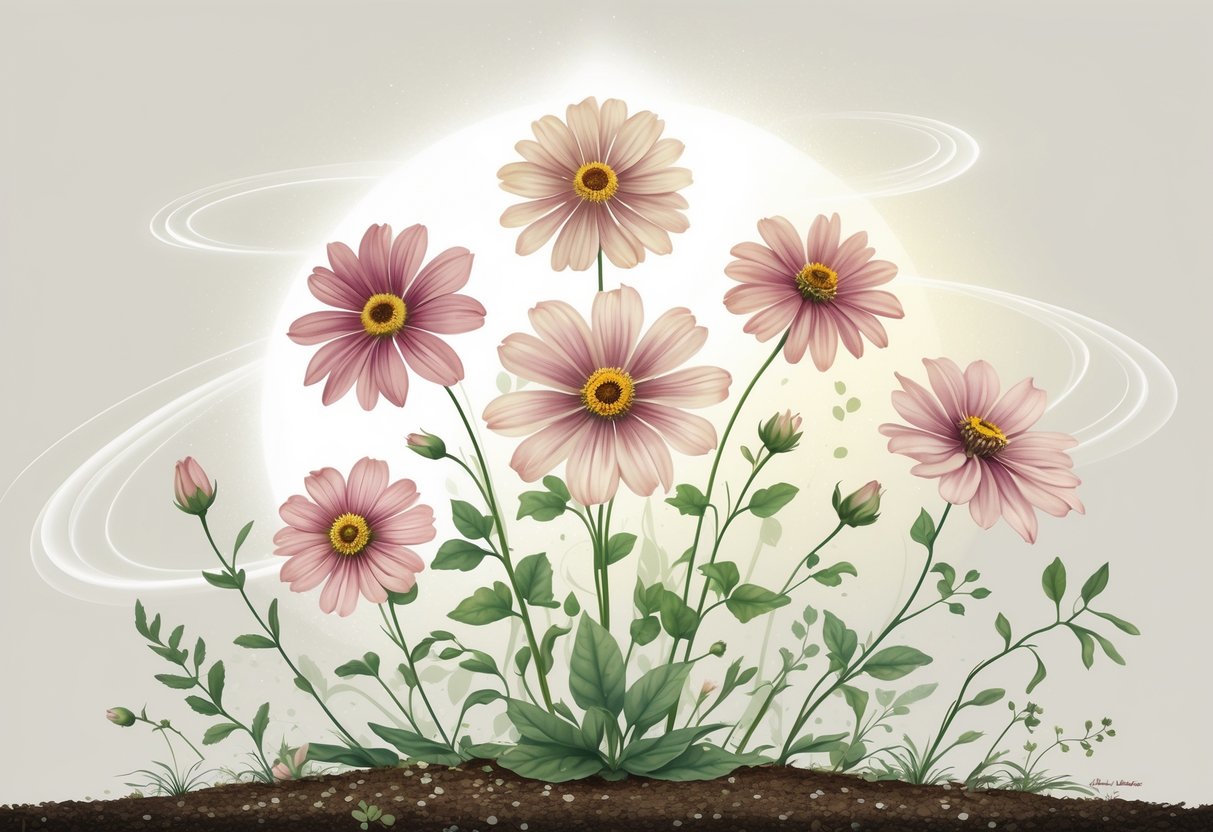
Scabiosa thrives best when its specific growing needs are met. Proper care helps maintain its health and supports its use in spiritual settings. It prefers well-drained soil, plenty of sunlight, and moderate watering.
Ideal Habitat for Scabiosa
Scabiosa grows well in full sun to partial shade. It needs soil that drains well to prevent root rot. A mix of sandy and loamy soil is ideal for moisture retention without becoming waterlogged.
It prefers soil with a neutral to slightly alkaline pH. The plant can tolerate poor soil but flourishes in fertile ground with regular organic feeding during the growing season. Good air circulation helps reduce fungal problems.
Scabiosa is drought-tolerant once established but benefits from consistent watering during dry spells. Deadheading spent flowers encourages longer blooming. Mulching helps maintain soil moisture and temperature.
Role in Spiritual Gardening
In spiritual gardening, Scabiosa is valued for its symbolism of endurance and healing. Keeping it healthy supports its energetic qualities. Gardeners often place it where its resilience can inspire patience and balance.
Its blooms attract pollinators, fostering a connected garden atmosphere. This interaction enhances a sense of harmony, which aligns with spiritual growth and meditation spaces.
Proper care, including regular pruning and attention to soil health, ensures the flower remains vibrant. This keeps its presence strong in environments meant for reflection and calm.
Follow us on Social Media!
